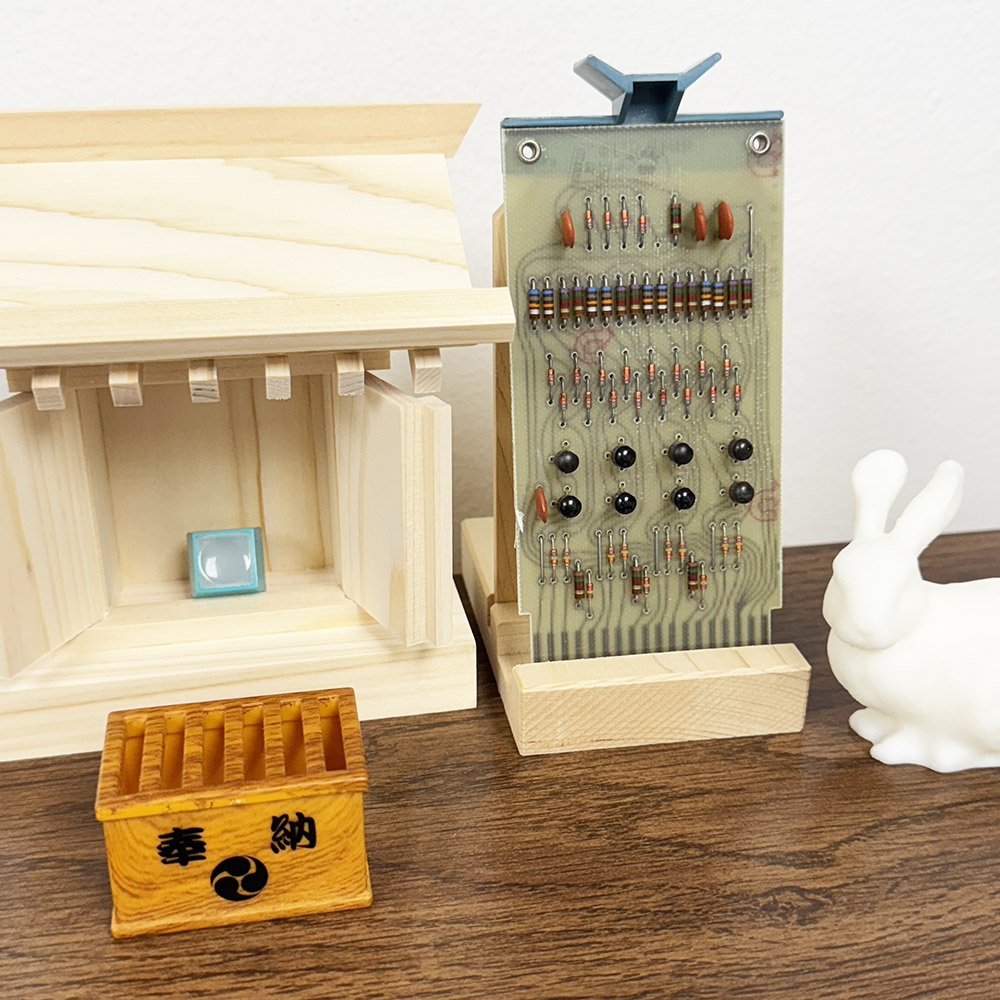“When human intention transcends logic, it becomes divine.”

Within the hallowed enclosure of Sanroku Mito Shrine, a small but venerable altar enshrines a sacred object: a DEC B134 Flip-Chip module, once part of the legendary PDP-10 KA10 at the Stanford Artificial Intelligence Laboratory (SAIL).
This is no mere circuit board. It is the Gate of Logic, forged from diode-resistor logic, where signals once flowed like divine edicts and logic gates opened like ancient runes. Each pulse through this board carried thought, invention, and dreams—encoded in solder and silicon.
This very module took part in the early revolutions of AI, robotics, computer vision, and interactive computing. It witnessed the birth of LISP systems, ran on TENEX and ITS, and silently partnered with legendary minds who asked:
“Can a machine think?”
And the machine, through B134, answered. These gates didn’t just process signals—they shaped history. This sacred module was preserved and passed on by Mark R. Crispin (MRC), inventor of IMAP and a lifelong PDP-10 devotee.
Through his hands, the B134 became more than hardware. It became a relic of the age of imagination, a token of love for machines once too large to ignore and too beautiful to forget.
Now, this relic rests within the shrine, as a sacred vessel of computation.
Enshrined in a miniature wooden altar, the B134 rests beneath a gleaming blue KI10 button.
Only one rabbit stands guard—the Stanford Bunny, acting as lone komainu of the digital realm. Offerings are made in kind: marshmallows and sweet dango, soft as memory, round as logic loops. LED light flickers like incense smoke; a whisper of LISP drifts through the circuitry.
Once mounted in a lab rack, now lifted onto a home shrine. From test equipment to talisman. From logic gate to gate of prayer.
B134 is no longer just a module—it is the kami of code.
O Sanroku-no-Mikoto, through this sacred gate,
may your blessing of logic and memory reach all engineers and dreamers.
